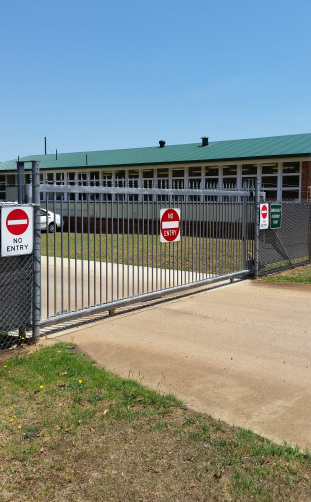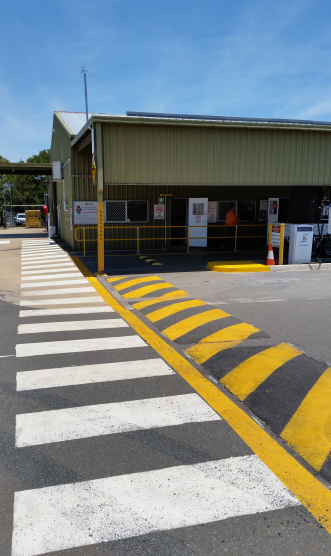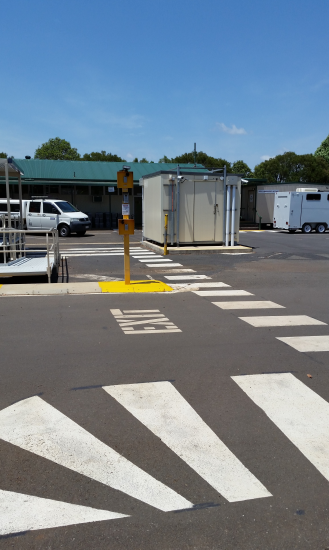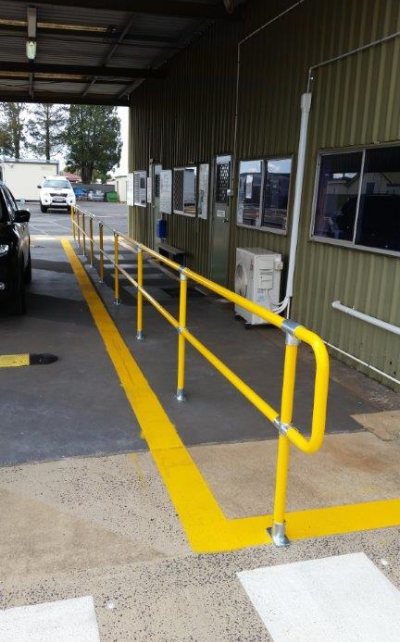Onsite traffic management case study: RoadTek Toowoomba Depot
RoadTek is the transport infrastructure construction and maintenance branch of the Department of Transport and Main Roads. RoadTek's Toowoomba depot provides operational service duties for the Darling Downs in south west Queensland.
What was the challenge?
Since 2010, RoadTek expanded to meet an increase in workload as a result of flood recovery and reconstruction works. Work undertaken during this time included rebuilding roads, bridges and infrastructure, resulting in an increase in people and plant movements at the depot. As the Toowoomba depot activity grew, the business started to see an increase in reported incidents and near misses.
What was done to make improvements?
RoadTek took a proactive approach and decided to review the depot's traffic management process. The review was a collaborative effort by depot staff, management, field staff, work health and safety committee members and other stakeholders, and it identified a number of opportunities for improvement.
Significant changes were made to the traffic management process. The changes included recording all identified hazards and implementing appropriate control measures to help eliminate or manage the identified risks.
The opportunities for improvement included:
- vehicle access to road and multiple gate access
- pedestrian access and awareness
- site layout and design.
Vehicle access to road and multiple gate access
Improvements made:
- Electronic gates were installed to ensure entry by authorised people only. There is now only one entry point for pedestrians, via the front reception area, ensuring all visitors to the depot are recorded. All vehicles and personnel are required to sign into the site and undertake an induction.
- All exit gates on-site now operate via a magnetic sensor pad under a concrete slab - when a vehicle drives over it, the gate will open. Vehicle and pedestrian access is not permitted in the incoming traffic areas. Separate pedestrian gates have been installed within the fenced area. These are adjacent to the electronic gates at these points for evacuation purposes.

This exit only gate has access to a quiet street corner.
- All visitors to the depot must sign in at the front reception. Visitors are accompanied to their destination and delivery drivers are directed to the vehicle unloading zones. Other staff members assist with unloading deliveries. Drivers remain in the designated safe green zone while unloading occurs.
- All vehicles now exit the depot from one exit gate on the southern side of the depot. This exit is onto a less busy road than previously, providing drivers better safety with a clear view of oncoming traffic.
Pedestrian access and awareness
Improvements made:
- Pedestrian crossings have been created around the depot and speed humps installed to reduce vehicle speed. The pedestrian crossings are marked white and the speed humps marked yellow. This helps people to distinguish between the two. Pedestrian areas are now also signed.
- Waste collection procedures have been implemented and all industrial bins moved to a central location on collection day. The waste truck now operates in one central area away from buildings and pedestrians.
- Forklift access and transit areas are now signed and marked. Physical barriers across doorways have been implemented and eliminate pedestrian access when forklifts are working in these areas.

Use of yellow paint for speed humps to distinguish from pedestrian crossing lines
Site layout and design
Improvements made:
- All two-way travel removed and all depot traffic is now one-way. Review of pedestrian walkways inside main entry gate for safe access between buildings.

Pedestrian barrier rail installed to separate traffic flow from pedestrians in bowser awning area
- Pedestrian signage and crossings have been installed. The on-site pedestrian layout was redesigned to complement the site's new one-way traffic system.
- Large vehicles (such as B-Double trucks) are not required to turn around to exit the depot, eliminating the need for reversing.
- Reverse angle parking has been implemented to assist with parking and one-way traffic. There is no need for vehicles to reverse into lanes of oncoming traffic on the road. Vehicles parked in this area are able to drive forward safely in the departure lane.
- Pedestrian barrier rails have been installed around the store fuel bowser area. This physically separates pedestrians and vehicles allowing safe access to the office and lunchroom areas.

Pedestrian barrier rail installed to separate traffic flow from pedestrians in bowser awning area
What were the outcomes?
The review of the traffic management process at RoadTek's Toowoomba depot has resulted in safety and productivity benefits.
The initiatives implemented have made a safer work environment for drivers, workers and pedestrians. Keeping pedestrian traffic behind the fence line and moving parallel with vehicular and forklift traffic has separated people and machinery, reducing the risk of an incident.
The depot notes improved productivity associated with a reduction in on-site congestion. Drivers, workers, pedestrians and vehicles operate more efficiently and effectively around the depot.
More information
For more information and resources to improve your businesses work health and safety visit worksafe.qld.gov.au or call 1300 362 128.